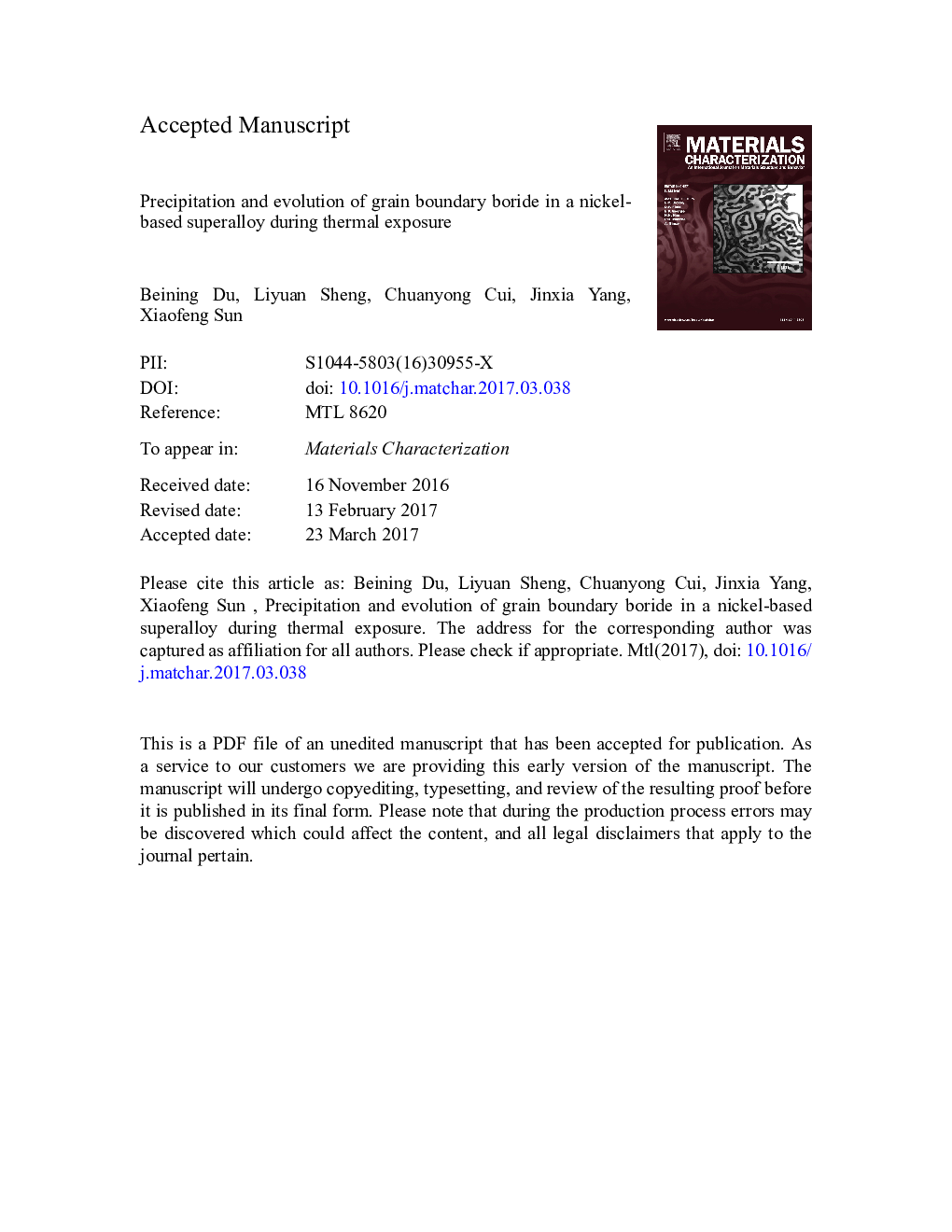| Article ID | Journal | Published Year | Pages | File Type |
|---|---|---|---|---|
| 5454739 | Materials Characterization | 2017 | 19 Pages |
Abstract
As a grain boundary strengthening element, B is widely applied in most Ni-based superalloys. However, the added B prefer to interact with other elements near the grain boundary and form borides which would perform evolution during high temperature service, and then affect the grain boundary strength and mechanical properties of the superalloy. In the present research, a trace B doped nickel-based IN792 superalloy was fabricated and preheat treated as 1120 °C/2 h AC + 1080 °C/4 h AC (AC: air cooling) followed by thermal exposure at 750 °C, 845 °C, 900 °C and 950 °C for different times to investigate the precipitation and evolution of grain boundary M5B3 boride. The results indicate that M5B3 boride precipitates along the grain boundary at the early time of the thermal exposure of IN792 superalloy. When thermal exposed at different temperatures, the grain boundary M5B3 boride exhibits different evolution behavior. At 750 °C and 845 °C, M5B3 boride grows up gradually with the thermal exposure proceeding, and no phase transformation occurs. While at 900 °C and 950 °C, the grain boundary M5B3 boride precipitates at the early stage of the exposure process, and then transforms into M23C6 carbide as gray film with the increasing of the exposure time.
Related Topics
Physical Sciences and Engineering
Materials Science
Materials Science (General)
Authors
Beining Du, Liyuan Sheng, Chuanyong Cui, Jinxia Yang, Xiaofeng Sun,
